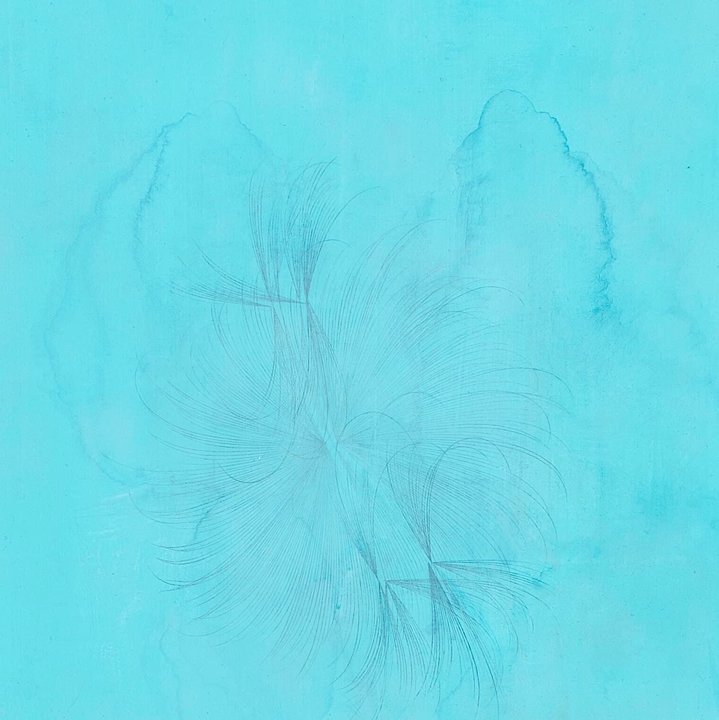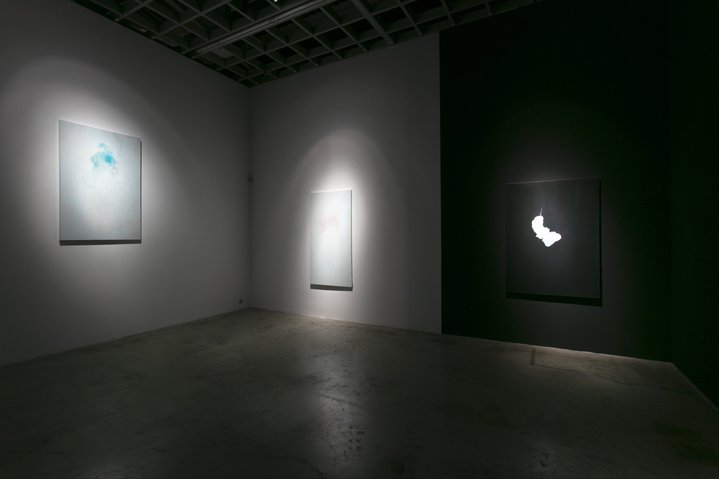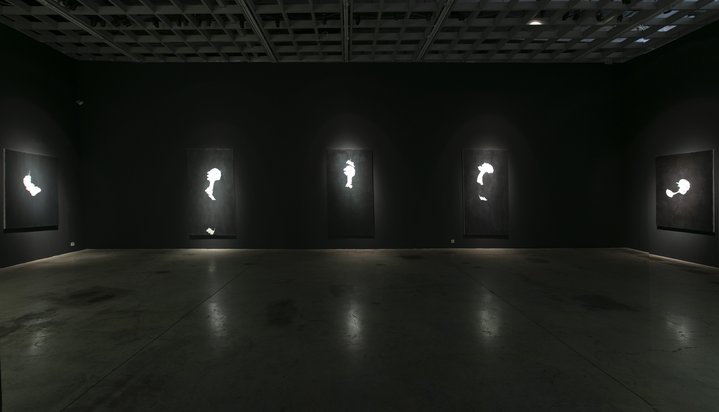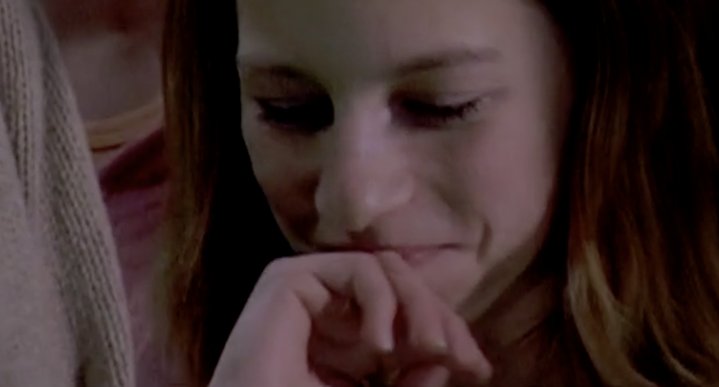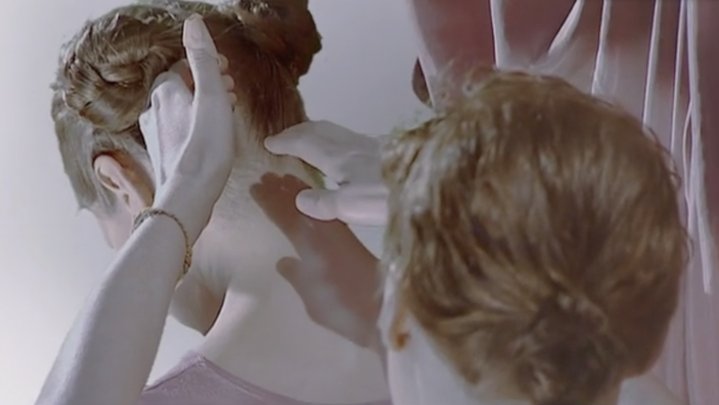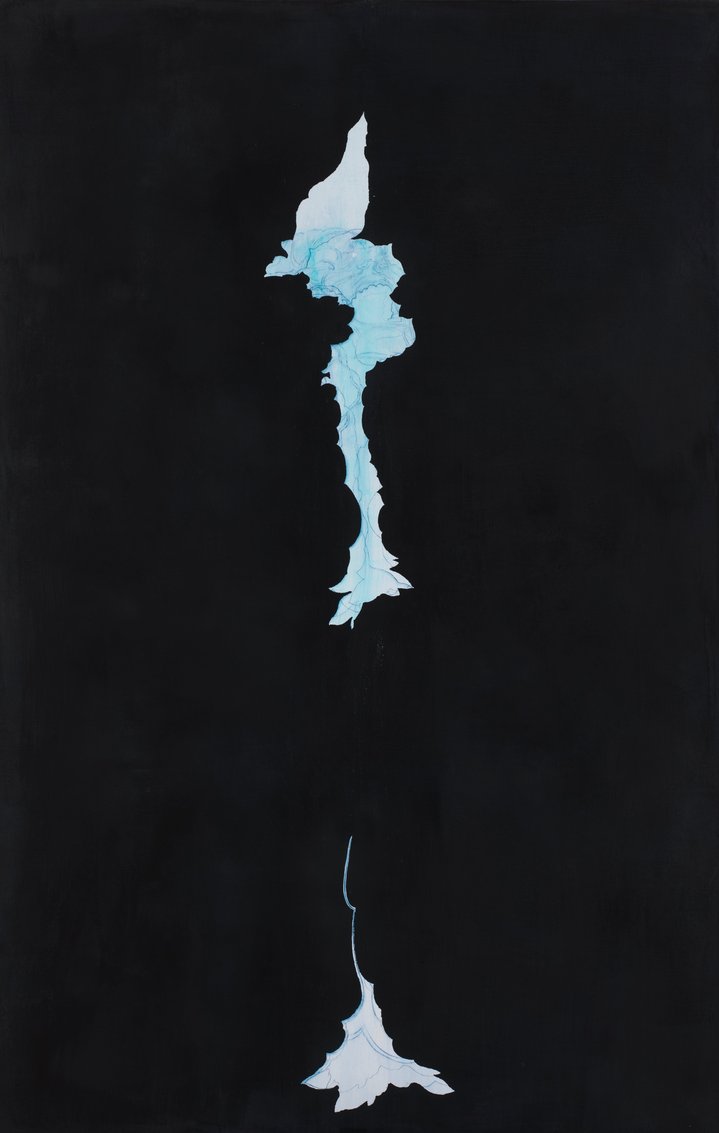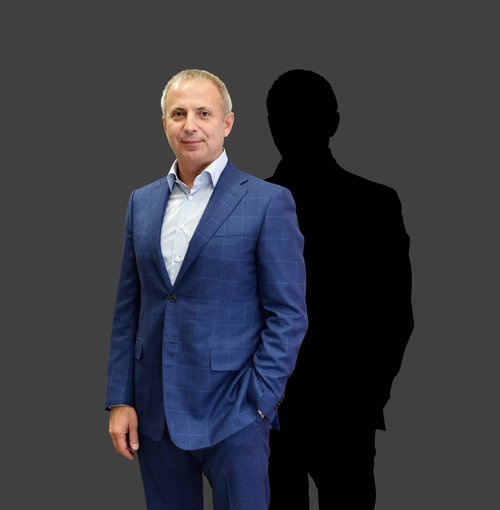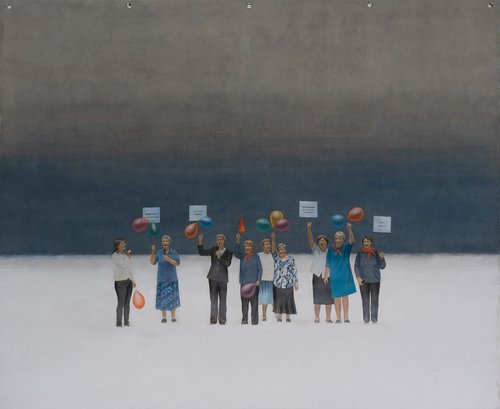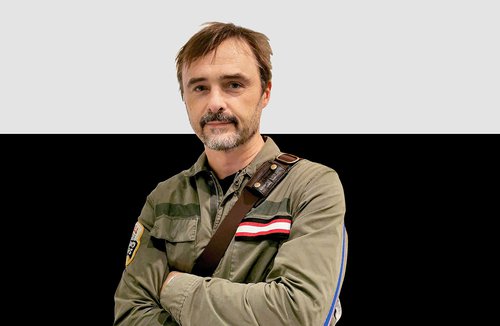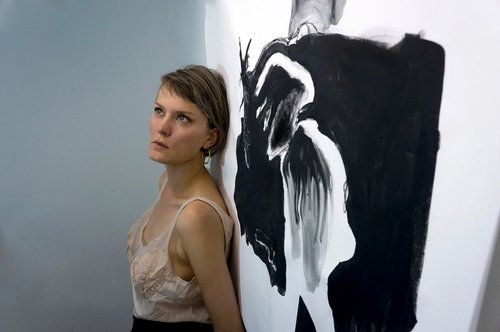The Whispering and Shouting of Viktor Alimpiev

Viktor Alimpiev. Courtesy of the artist
In Russian painter and video artist Viktor Alimpiev’s show at the Vladey auction house in Moscow he challenges some of art’s most fundamental notions. Whether it’s abstraction or figurative art or black and white, little escapes his questioning gaze.
Viktor Alimpiev (b. 1973) has always been a colourist. He is one of the most sensitive colourists among Russian painters today and this fine sensitivity is on a par in his video art too. His work is easier to describe using words such as ‘fragile’, ‘hazy’, ‘tense’, or ‘emotional’ rather than the normal vocabulary of an art critic. Maybe it is because his art is all about shades of emotion, or shadows of feeling, and the strangeness of delight. His approach to art is characterised by rigour and purism.
Alimpiev has just completed a new cycle of eleven paintings which are now on display at the Ovcharenko Gallery in Moscow, seven ‘black’ and four ‘white’. Actually, the ‘white’ ones are not white at all, but more a complex colour formed by a subtle mixture of blue and pink, which together give a certain sense of whiteness. They feature little specks, or lines that seem to sprout through one another. And his black paintings are not quite black either, but big black planes that have windows with the same 'white' inside. It is in relation with one another that they become 'black' and 'white', creating, as the artist puts it, a sense of 'hallucinosis’.
The main room in the show is dominated by five of the black canvases set against walls which have been painted black. It’s a haunting dark space of uncertain height at the end of a path, where there are small glimpses of holes which seem to glimmer. "I came up with these holes in black about a year ago, last winter," Alimpiev says. Set in the Vinzavod art cluster and gallery hub, where the Ovcharenko gallery is located, his work stands out among the rest for its commentary on current events, although the artist himself takes pains to avoid direct political statements.
"The black background is like a real thing and you look through a gap, or a hole. The black background resonates with terrible events, but it was not that I sat down and started making up something horrible. The work brought it out on its own. The changes are gradual, like in a spirit-rapping séance. It's like someone is moving, but the changes happen on their own. This exhibition is in a way my own answer. You don't have to bend to a changing world, but you can defend yourself".
This is the first time Alimpiev has created a series centred around the colour of black, so it represents a new departure in his work. Female heads emerge out of the chaotic lines in the middle of the white windows. They seem to be shouting or howling, their expressions reminiscent of Edward Munch (1863–1944)’s screams or the grimacing sculptural heads of Franz Messerschmidt (1736–1783). "I wasn't thinking of a scream, but of an open mouth," the artist explains, "it could also be a yawn. What is a yawn? When a little kitten yawns, it reveals a predatory mouth. A yelp takes more effort. A yawn has a different form. But it may even be singing, because singing involves a slight parabola, like yawning, a single breath. The important thing is that there is nothing repressed in this emotion, if it were a cry, it would be the shout of a tennis player". He built up the female images using photographs and sketches of his wife, and gradually refined the form to the point where only the outline of the face and the movement of the mouth remain. "In the course of sketching there is a cushioning of form," explains Alimpiev.
I wonder if the new series is perhaps an indirect response of the artist not only to the events in the Ukraine, but also to the fact that he had to suddenly leave the workshop where he had been painting for many years. The former site of a military design bureau and experimental plant called NIIDAR had become an artist base back in 2014, until November last year when the entire block was cleared for a new residential development. It destroyed what was a living, cultural environment with its own established traditions. Alimpiev's studio at NIIDAR had been a clean space with large windows and a level overhead light. It looked more like a dentist's office than an artist’s atelier. Even the cupboards to store the painting and books were white to keep out any reflexes. There was perfect order. Minimalism. In the middle Viktor had built astructure on which he could place his canvasses horizontally while he worked on them. There were canvases tacked onto the walls…
Part of Alimpiev’s signature style is his highly idyosyncratic painterly technique. First comes a white ground in watercolour, then he outlines the shape by sketching, and then finally he pours on thin puddles of colour. "Blurry spots are the medium for the drawing. My things need to be placed in a nutritious solution, like seaweed in an aquarium." The artist visibily enjoys sharing the secrets of his craft: "the lines of the drawing are applied both under and over the colourful layers, which affects spatiality".
In this new project exhibited at Ovcharenko, Viktor Alimpiev challenges the boundaries between black and white, painting and drawing, exposition and installation. In his black paintings, a multi-layered background has been added to Alimpiev's usual technique: grey-purple acrylic on top is painted with a black watercolour primer with a reddish tone, this combination gives both an asphalt sheen and an echo of other colours in the black. “Both of these layers are applied transparently, resulting in something equating to total black”. Painting the walls in a less active black than the background colour is the artist's intention. "On the white walls black becomes just black. The black colouring of the walls in the exhibition paints the blackness of black."
Since the 2000s, Viktor has been one of the Russian artists of his generation to have had the most exhibitions abroad. Hisportfolio includes more than thirty solo exhibitions, most of them outside Russia. He is a regular participant at European Biennales: he took part in the main project of the 55th Venice Biennale in 2013 as well as various Venice Biennale collateral events in 2003, 2005 and 2011. He has been exhibited at the nomadic Biennale Manifesta 5 in San Sebastian in 2004s and numerous other critically aclaimed shows in Europe. He has also shown works in group exhibitions and video shows in different museums throughout the world, including in MUKHA, Antwerp, the Museum of Contemporary Art, Budapest, Guggenheim New York, MoMA PS.1, New York, Hiroshima City Museum of Contemporary Art, Hiroshima, the Centre Pompidou, Paris, the Musée d'Art Moderne de la Ville de Paris, Paris, the Museum of Modern Art, San Francisco and the Secession in Vienna.
Viktor Alimpiev is equally comfortable working with both video and painting, but never mixes the two. "The thing is that video as a medium is not on friendly terms with any other kind of art", explains the artist, "it can be friends with something that is not a work of art, or with a work of art which has been reduced to a minimum. At the Name Gallery in St Petersburg, we printed pages from actresses' notebooks, something that is not art, but is catchy. Painting also has little in common with anything, certainly not sculpture." For the artist video art and painting are based on entirely different kinds of conventions: "We look at running shadows and tell ourselves that these are people. But this is reflected light," Alimpiev theorises, "when we look at a painting, we see paint on a plane. That is why painting and video can only be shown separately in a large retrospective exhibition". He prefers to exhibit his videos in group shows in spaces isolated from any other work. Now that he has finished this new cycle of paintings, he is thinking of turning to video next and already has some ideas:"I am thinking about a new work," Viktor tells me, "and I would like to focus on strange emotions".
Viktor Alimpiev. Terrible as the Moon
Moscow, Russia
November 16, 2022 – January 18, 2023







